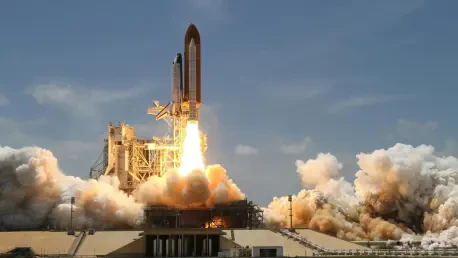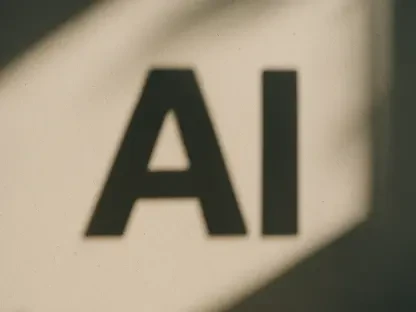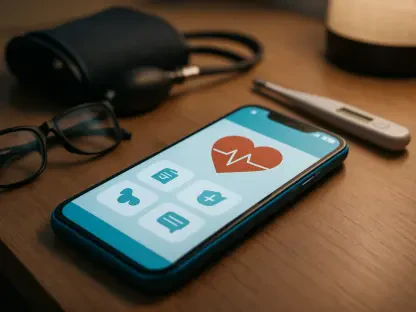Imagine a scenario where an astronaut on a mission to Mars faces a sudden medical emergency, with no possibility of real-time guidance from Earth due to communication delays of up to 20 minutes each way. This stark reality of deep-space exploration has prompted an unprecedented collaboration between NASA and Google to develop an innovative solution. Their joint effort has resulted in a proof-of-concept AI medical assistant known as the Crew Medical Officer Digital Assistant (CMO-DA), specifically designed to support astronauts during long-duration missions. As part of NASA’s Artemis program, which focuses on returning humans to the Moon and eventually reaching Mars, this tool addresses the critical need for independent medical care in environments where traditional support from Earth is unattainable. By empowering astronauts to manage health issues ranging from minor ailments to severe injuries, this technology marks a significant step forward in ensuring the safety and success of future space endeavors.
Pioneering Autonomy in Deep-Space Healthcare
The challenges of deep-space missions demand a level of self-sufficiency that goes far beyond what is required for operations closer to Earth, such as those on the International Space Station. Unlike near-Earth missions where near-instant communication with medical experts is possible, lunar and Martian expeditions must account for significant delays in signal transmission. The CMO-DA, built on Google Cloud’s Vertex AI platform, serves as a vital bridge to fill this gap by offering automated clinical decision support. It enables astronauts to diagnose and treat a variety of conditions independently, from earaches to broken bones, ensuring that health emergencies do not derail mission objectives. NASA’s vision with this tool is to create a robust system that anticipates the unique physiological challenges of space, such as the impact of microgravity on bone density and muscle mass, which require constant monitoring and specialized interventions not typically addressed by standard medical systems.
Testing of the CMO-DA has already yielded encouraging results, demonstrating its potential to revolutionize medical care in isolated environments. Diagnostic accuracy rates for conditions like ankle injuries, flank pain, and ear pain have ranged from 74% to 88%, as evaluated through the Objective Structured Clinical Examination (OSCE) framework, a recognized standard for assessing clinical skills. A panel of doctors, including an astronaut, reviewed these outcomes, affirming the system’s reliability for space-specific needs. Beyond diagnostics, the AI tool leverages speech, text, and image inputs to propose treatments, making it a versatile assistant for astronauts with varying levels of medical training. NASA continues to refine the system by integrating data from devices like ultrasounds and tackling logistical hurdles, such as the limited availability of medical resupply missions, ensuring that the technology evolves to meet the rigorous demands of extended space travel.
Bridging Space and Earth with Dual-Purpose Innovation
While the primary goal of the CMO-DA is to support astronauts in deep space, its implications extend far beyond the realm of space exploration. Experts involved in the project believe that the technology holds immense potential for improving healthcare delivery in remote or underserved regions on Earth. Places like isolated villages or disaster-stricken areas, where access to medical professionals is often limited, could benefit from the same AI-driven clinical support that astronauts rely on. David Cruley from Google’s Public Sector business unit has highlighted this dual-purpose application, noting that the lessons learned from developing this tool could transform how medical assistance is provided in challenging terrestrial environments. This broader societal value underscores the significance of the collaboration, as it addresses global health disparities while advancing the frontiers of space travel.
The partnership between NASA and Google exemplifies how cutting-edge AI technology can be tailored to meet highly specialized needs. Mackenzie Ferguson, an AI tools researcher, has emphasized the importance of embedding space-specific medical knowledge into the CMO-DA to ensure it addresses the unique physiological effects of prolonged exposure to space environments. This bespoke approach distinguishes the system from generic medical tools, positioning it as a critical asset for astronaut health management. As development progresses, plans are in place to enhance its capabilities further, ensuring adaptability to a wide range of scenarios both in space and on Earth. The synergy of technological innovation and practical application in this project reflects a forward-thinking mindset, paving the way for solutions that transcend traditional boundaries of healthcare and exploration.
Reflecting on a Groundbreaking Step Forward
Looking back, the development of the CMO-DA stood as a pivotal achievement in preparing for the complexities of deep-space missions. Its ability to provide autonomous medical support addressed a fundamental barrier to human exploration beyond Earth’s orbit, while early testing validated its potential with impressive diagnostic accuracy. The collaboration between NASA and Google showcased how interdisciplinary efforts could yield transformative results, blending AI expertise with the demands of space travel. Moving forward, the focus shifted to refining the system’s integration with advanced medical devices and expanding its utility for Earth-based applications in remote areas. This ongoing commitment to enhancement promised to strengthen astronaut safety and broaden access to healthcare worldwide. As a prototype, the CMO-DA laid a solid foundation for future innovations, signaling a new era where technology empowered humanity to overcome isolation, whether in the vastness of space or the farthest corners of the planet.









